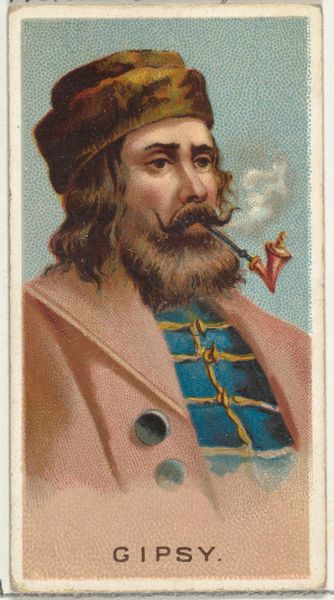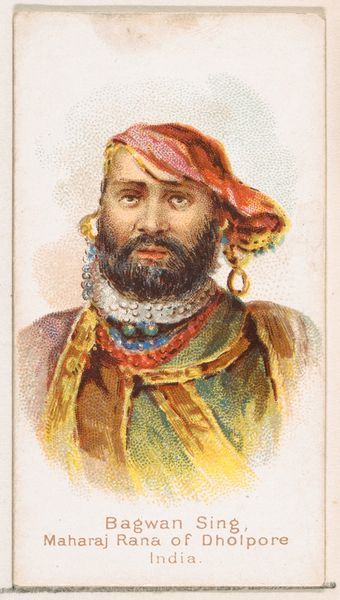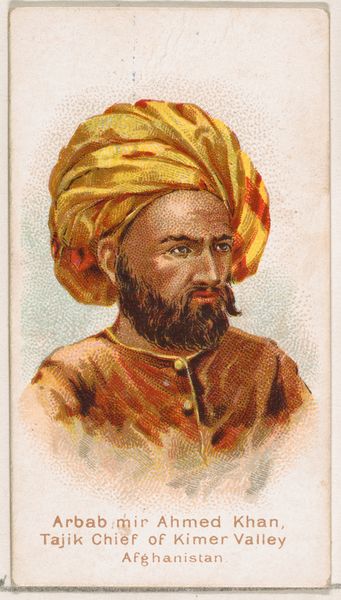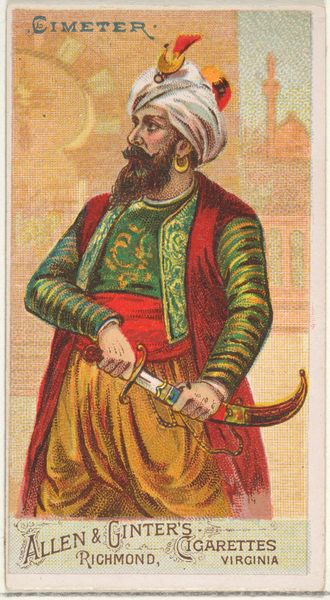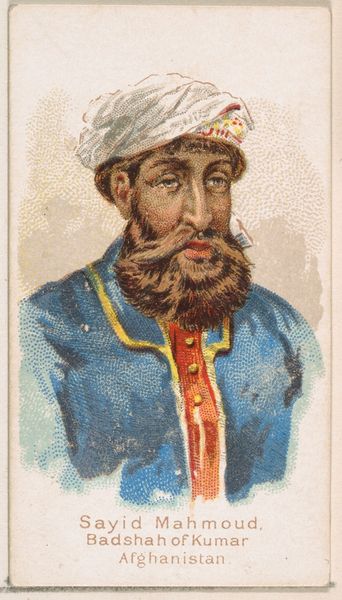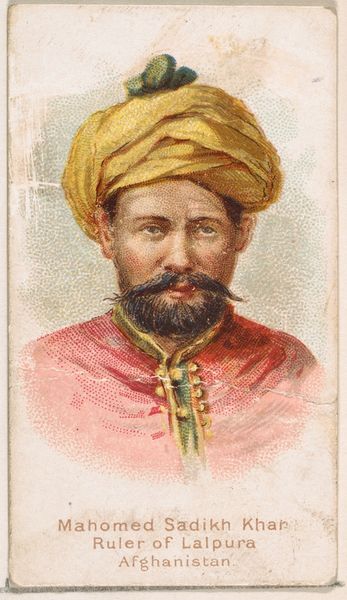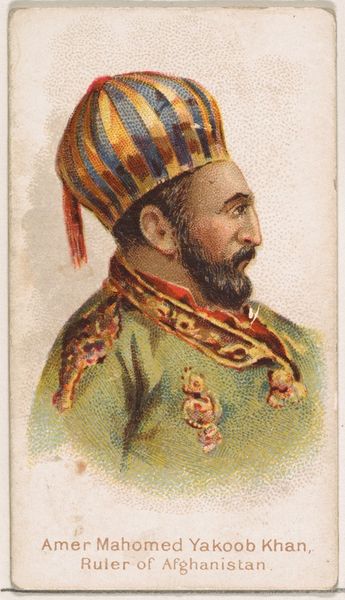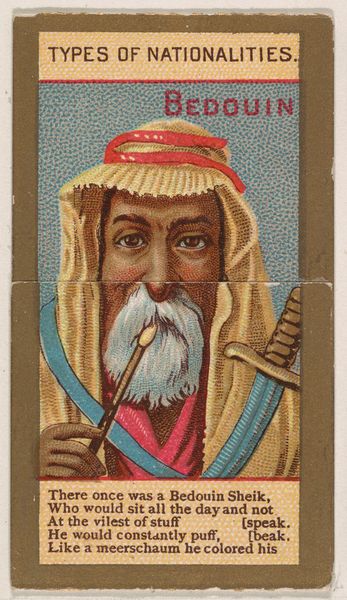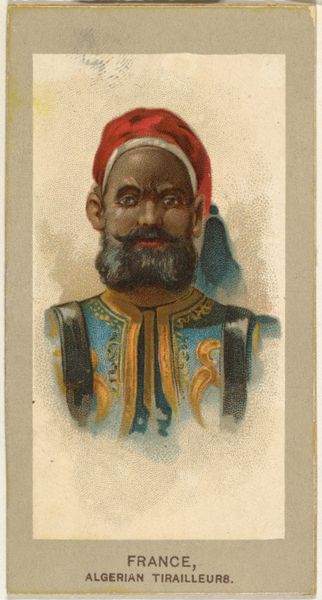
Asiatic Turk, from World's Smokers series (N33) for Allen & Ginter Cigarettes 1888
drawing, print
drawing
oil painting
portrait reference
acrylic on canvas
men
animal drawing portrait
portrait drawing
watercolour illustration
facial portrait
portrait art
watercolor
fine art portrait
Dimensions: Sheet: 2 3/4 x 1 1/2 in. (7 x 3.8 cm)
Copyright: Public Domain
Editor: This is the "Asiatic Turk," a print drawing made in 1888 by Allen & Ginter, part of their World's Smokers series. It's so small, almost like a playing card. It features a man smoking a very ornate pipe. What strikes you most about it? Curator: I’m immediately drawn to the commodification inherent in this piece. It's not simply a portrait; it's a cigarette card. These were mass-produced, inserted into cigarette packs to stiffen them and to act as advertising. The production process itself, from the harvesting of tobacco to the printing of these cards, represents a global network of labor and resources. The portrait is thus a means to an end, an aesthetic veneer applied to an inherently exploitative product. Editor: Exploitative how? Curator: Think about where the tobacco came from. Was it cultivated using slave labor? What were the working conditions like in the factories that produced the cigarettes and these cards? These images normalized the consumption of tobacco while obscuring the realities of its production. Moreover, the "exotic" subject, the "Asiatic Turk," exoticizes labor and consumption abroad as an imperial gaze. Editor: So, you see the image itself as a tool of industry? The “art” serves a very specific commercial purpose. Curator: Precisely! The drawing is part of a material culture, intricately bound to systems of labor, trade, and even cultural representation. How do we reconcile the aesthetics with the socioeconomic machine making and distributing the artwork? What sort of consumer were they trying to attract with this image? Editor: It definitely shifts my perspective, considering it beyond just the aesthetic appeal and focusing on the bigger picture of its creation and distribution. I never considered how complex it was! Curator: It forces us to acknowledge art is rarely separate from the gritty realities of material production and circulation. It is the tangible object connected with tangible realities.
Comments
No comments
Be the first to comment and join the conversation on the ultimate creative platform.
